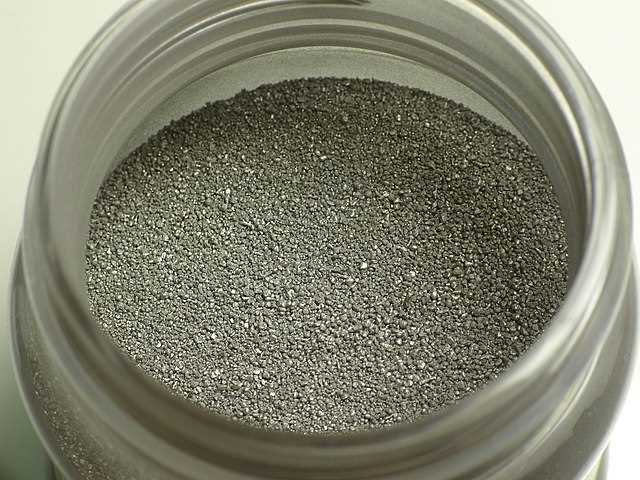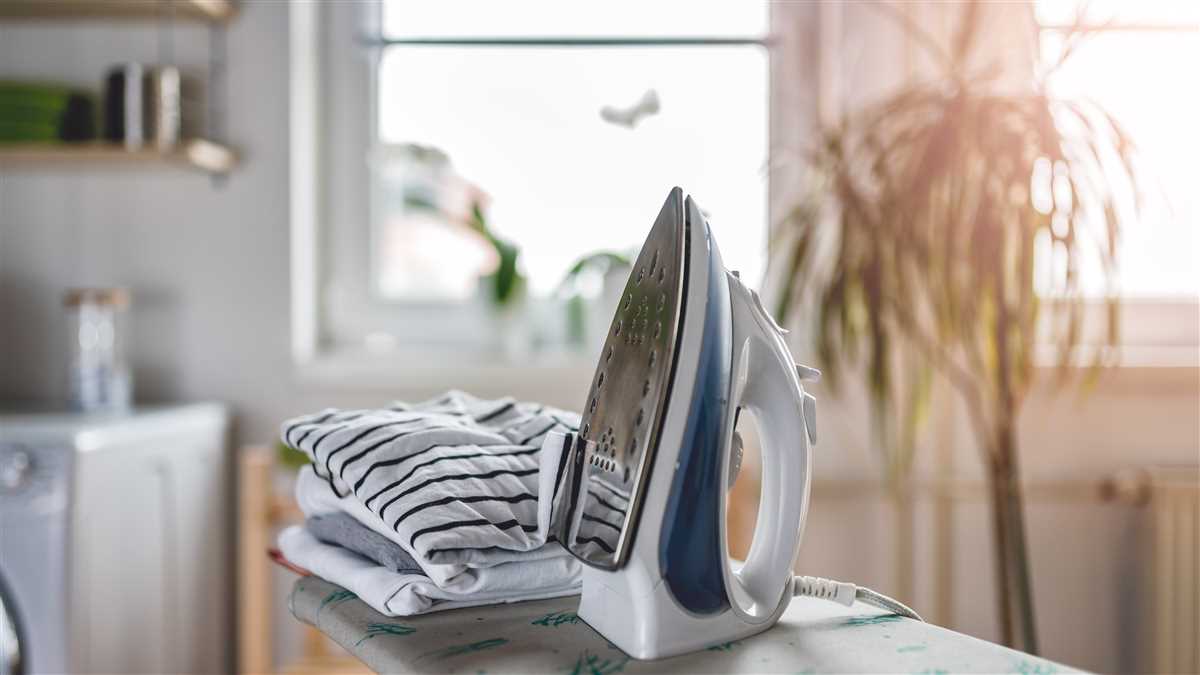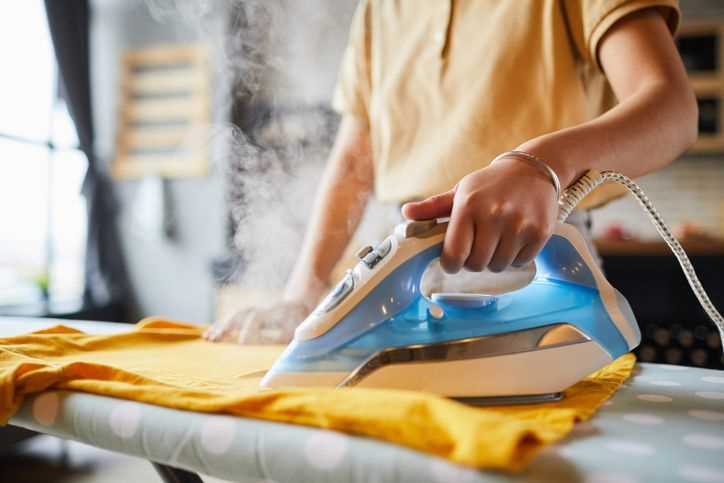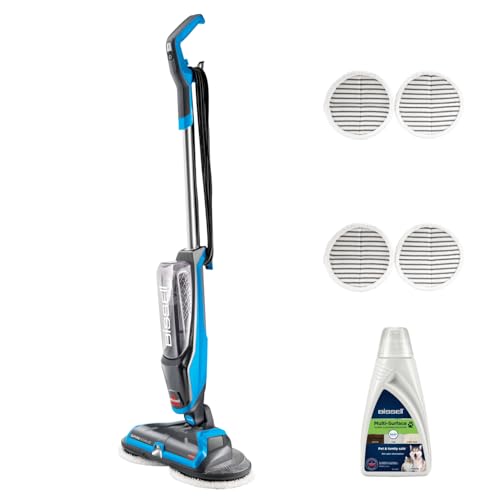




If you’ve ever noticed a white powder residue on your clothes after ironing, you’re not alone. This is a common problem that many people face, and it can be quite frustrating. But what causes this white powder residue? In this article, we will explore some of the most common reasons for this issue and explain why it happens.
One of the main reasons for white powder residue in your iron is the build-up of minerals in your water. This is particularly common if you live in an area with hard water. Hard water contains high levels of minerals, such as calcium and magnesium, which can accumulate in your iron over time. When you heat the iron, these minerals can dissolve and leave behind a white powder residue.
Another possible cause of the white powder residue is using too much starch or fabric softener. Starch and fabric softener are often used to improve the appearance and feel of clothes, but using too much can lead to a build-up on the iron’s soleplate. When this build-up is heated, it can turn into a white, powdery substance that transfers onto your clothes.
Lastly, the type of water you use in your iron can also contribute to the white powder residue. If you are using distilled water, which has had all impurities removed, you are less likely to experience this issue. However, if you are using tap water, which contains various minerals and impurities, you may notice the white powder residue more frequently.
In conclusion, white powder residue in your iron can be caused by a variety of factors, such as mineral build-up in your water, excessive use of starch or fabric softener, and the type of water you use. To prevent or minimize this issue, it’s important to regularly clean your iron and use distilled water if possible. By taking these steps, you can ensure that your iron works efficiently and your clothes remain free from white powder residue.
Lack of Proper Cleaning Routine

One common reason for white powder residue in your iron is a lack of proper cleaning routine. Over time, mineral deposits and impurities from the water can accumulate inside your iron, leading to the formation of the white powder residue.
Regularly cleaning your iron is essential to prevent the buildup of residue and maintain its performance. Here are some steps you can take to establish an effective cleaning routine:
- Read the manufacturer’s instructions: Before starting the cleaning process, it is important to consult the user manual provided by the manufacturer. This will give you specific instructions on how to clean your iron without causing any damage.
- Use distilled water: When filling your iron’s water tank, it is recommended to use distilled water instead of tap water. Distilled water has a lower mineral content, reducing the chances of mineral deposits forming inside the iron.
- Empty the water tank: After each use, empty any remaining water from the iron’s tank. This will prevent water from sitting inside the iron and potentially causing mineral buildup.
- Clean the soleplate: The soleplate is the bottom surface of the iron that comes into direct contact with your clothes. To clean it, unplug the iron and allow it to cool down. Then, use a damp cloth or sponge to wipe away any residue. For stubborn stains, you can use a mixture of equal parts vinegar and water.
- Descale the iron: To remove mineral deposits from the inside of the iron, you can use a descaling solution or a mixture of white vinegar and water. Follow the instructions provided by the manufacturer for the best results.
- Rinse the iron: After descaling, thoroughly rinse the iron with clean water to remove any traces of the descaling solution or vinegar. Make sure to follow the manufacturer’s instructions for rinsing.
- Dry the iron: Once you have finished cleaning and rinsing the iron, allow it to dry completely before storing it. Placing a dry cloth over the soleplate can help absorb any excess moisture.
By following these cleaning steps regularly, you can prevent the buildup of white powder residue in your iron and ensure it continues to function effectively.
Use of Tap Water or Hard Water

One of the most common reasons for white powder residue in your iron is the use of tap water or hard water. Tap water can contain minerals and impurities that can leave behind a white powdery residue on the soleplate of your iron.
Tap Water: Tap water is often treated with chemicals such as chlorine or fluoride to make it safe for consumption. These chemicals can react with minerals present in the water and result in the formation of a white powder when the water evaporates.
Hard Water: Hard water contains high levels of minerals, such as calcium and magnesium. When you use hard water in your iron, these minerals can build up on the soleplate and form that white residue. Hard water can also cause limescale buildup within the iron, affecting its steam performance and overall longevity.
To avoid the issue of white powder residue, it is recommended to use distilled water or filtered water in your iron. Distilled water has had all impurities and minerals removed through a process of distillation, making it ideal for use in appliances like irons. Alternatively, you can use filtered water to reduce the mineral content and prevent the buildup of white powdery residue.
Regular Cleaning: In addition to using the right type of water, it is essential to regularly clean your iron to prevent the buildup of mineral deposits and white residue. Refer to the manufacturer’s instructions for proper cleaning methods or consider using a descaling solution specifically designed for irons.
| Tip | Description |
|---|---|
| Use distilled or filtered water | Avoid tap water or hard water |
| Clean the iron regularly | Prevents mineral buildup |
| Follow manufacturer’s instructions | For proper maintenance and cleaning |
By taking these precautions and using the right water source, you can prevent white powder residue in your iron and ensure its optimal performance for years to come.
Presence of Mineral Deposits

One common reason for white powder residue in your iron is the presence of mineral deposits. When you use tap water in your iron, it can contain minerals like calcium and magnesium. These minerals can accumulate and form deposits over time.
When you heat the water in your iron, these minerals can react with the heat and evaporate, leaving behind a white powder residue. This residue can build up and clog the steam vents or spray nozzles of your iron, leading to decreased performance and potential damage to your clothes.
Mineral deposits can also cause the iron to produce less steam or even stop producing steam altogether. This can make it difficult to remove wrinkles and creases from your clothes effectively.
To prevent the buildup of mineral deposits in your iron, it is recommended to use distilled or demineralized water instead of tap water. These types of water have had the minerals removed, reducing the risk of residue formation. Additionally, regular cleaning of your iron, following the manufacturer’s instructions, can help to prevent mineral deposits from accumulating and affecting its performance.
Overheating of Iron

Overheating of an iron is another common reason for white powder residue. When an iron is set to a high temperature for an extended period, the mineral deposits in the water can evaporate and leave behind a white powdery substance known as limescale. Limescale is a mixture of calcium carbonate and other minerals that accumulate on the heating element or steam vents of the iron.
When the iron overheats, the limescale can become solid and stick to the surfaces inside the iron. This can lead to a decrease in the efficiency of the iron and leave white powder residue on clothes. To prevent this issue, it is important to avoid setting the iron to high temperatures for extended periods.
If you notice white powder residue on your clothes or inside your iron, it may be necessary to clean the iron and remove the accumulated limescale. This can usually be done by using a mixture of equal parts water and white vinegar. Fill the iron with the mixture, set it to steam mode, and allow the steam to run for a few minutes. Then, empty the iron and rinse it with clean water.
Regular maintenance of your iron, including descaling it regularly, can help prevent the issue of overheating and white powder residue.
Use of Incorrect Type of Water

Using the incorrect type of water in your iron can result in the presence of white powder residue. Different types of water can contain minerals and impurities that can leave behind deposits on the iron’s soleplate.
To prevent this issue, it is important to use the right type of water for your iron. Distilled or demineralized water is recommended for most irons as it is free from minerals and impurities. Tap water, on the other hand, may contain dissolved minerals such as calcium and magnesium, which can result in the white powder residue when heated.
If you are unsure about the quality of your tap water, it is best to use distilled water to avoid any potential issues. Distilled water can be easily found in most stores or can be produced at home using a distillation process.
Using the correct type of water will help to prolong the lifespan of your iron and prevent the white powder residue from accumulating on the soleplate. Regularly cleaning your iron’s soleplate with a non-abrasive cleaner can also help to remove any existing residue and maintain the iron’s performance.
FAQ
Why is there white powder residue in my iron?
White powder residue in your iron is usually caused by mineral deposits from hard water. When water evaporates during the ironing process, minerals like calcium and magnesium can be left behind, forming a white, powdery residue.
How can I prevent white powder residue in my iron?
To prevent white powder residue in your iron, you can use distilled or demineralized water instead of tap water. These types of water have lower mineral content, reducing the chances of mineral deposits forming in your iron. Additionally, regularly cleaning your iron and descaling it can help prevent the buildup of mineral deposits.
What should I do if there is white powder residue in my iron?
If you notice white powder residue in your iron, you can try cleaning it by filling the water reservoir with equal parts vinegar and water. Allow the mixture to sit for about an hour, then empty it and rinse the iron thoroughly. You can also use a descaling solution specifically designed for irons. If the residue persists, it may indicate a more significant issue with your iron, and you may need to consider contacting a professional for repairs.
Can white powder residue in my iron damage my clothes?
While white powder residue in your iron may not directly damage your clothes, it can potentially leave stains or marks on your garments. These stains can be difficult to remove and may require additional cleaning steps. It’s best to prevent the buildup of white powder residue by using distilled or demineralized water and regularly cleaning and descaling your iron.











